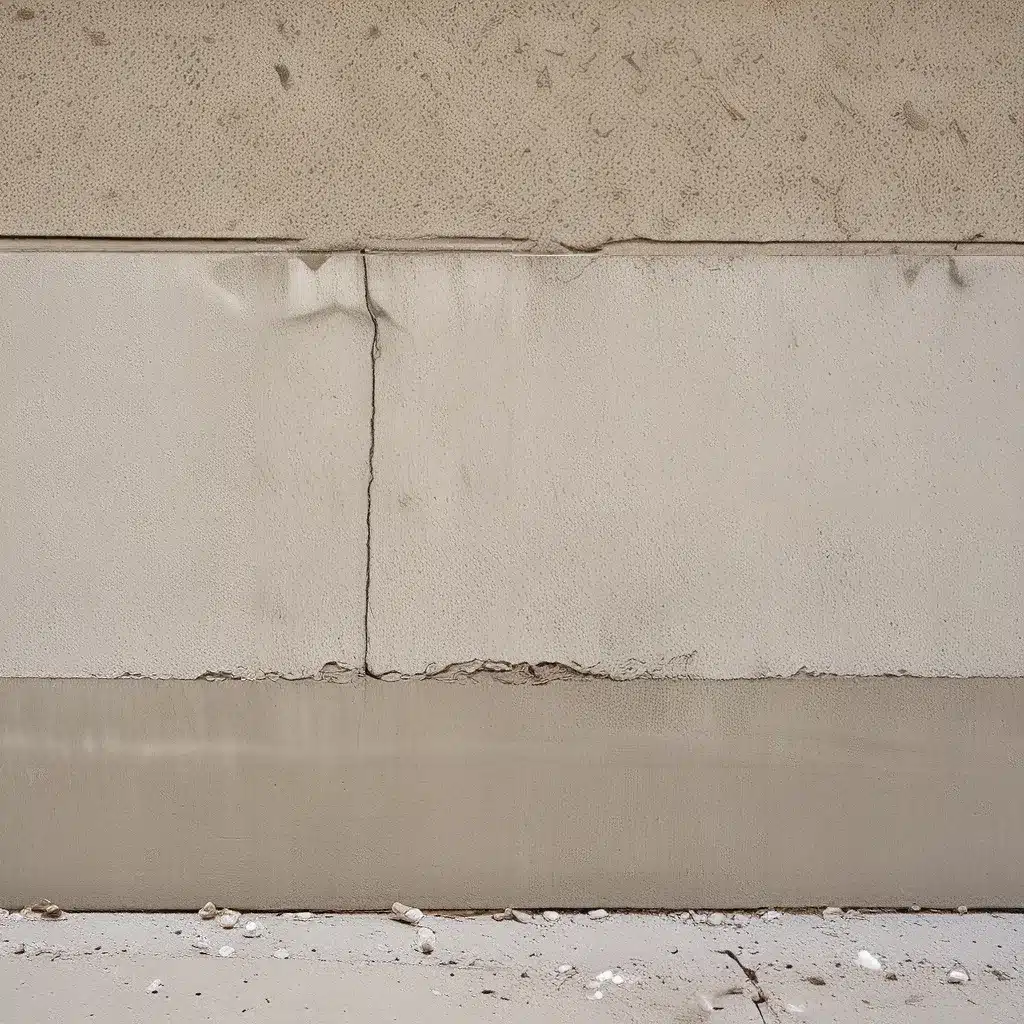
The Scourge of Spalling: Battling Concrete’s Biggest Foe
Have you ever looked at your once-gleaming concrete surface only to be met with a heartbreaking sight? Peeling, cracking, and crumbling – the telltale signs of concrete spalling. It’s a problem that can strike fear into the hearts of homeowners, building managers, and construction crews alike. But fear not, my friends! Today, I’m here to share my tried-and-true tips for preventing concrete spalling and keeping your surfaces looking as pristine as the day they were poured.
Understanding the Causes of Concrete Spalling
Before we dive into the solutions, let’s take a moment to understand the enemy. Concrete spalling is the result of a process called delamination, where the outer layer of the concrete starts to separate from the inner core. This can happen for a variety of reasons, but the most common culprits are:
- Freeze-Thaw Cycles: As water seeps into the concrete and freezes, it expands, creating cracks and fissures that lead to spalling.
- Corrosion of Reinforcement: When the steel reinforcement bars inside the concrete start to rust, they expand, causing the concrete to crack and peel away.
- Chemical Attacks: Exposure to harsh chemicals, like deicing salts or acidic materials, can break down the concrete’s structure, leading to spalling.
- Poor Construction Practices: Improper curing, inadequate concrete mix design, or shoddy workmanship can all contribute to the formation of spalling.
Mastering the Art of Concrete Maintenance
Now that we know what causes concrete spalling, let’s dive into the strategies for keeping your surfaces pristine. Buckle up, folks, because this is where the real magic happens!
Step 1: Develop a Vigilant Inspection Routine
The key to preventing concrete spalling is to catch it early. That’s why I recommend conducting regular inspections of your concrete surfaces, both inside and out. Look for signs of cracking, flaking, or discoloration, and address any issues before they have a chance to snowball.
Step 2: Implement a Comprehensive Cleaning Regimen
Dirt, grime, and other debris can all contribute to the deterioration of your concrete. That’s why it’s essential to keep your surfaces clean and well-maintained. Use a soft-bristled broom or a microfiber dust mop to sweep away the daily dust and dirt, and follow up with a neutral pH cleaner to remove any stubborn stains or spills.
Step 3: Seal the Deal with a Protective Coating
One of the best ways to prevent concrete spalling is to apply a high-quality sealer to your surfaces. These protective coatings create a barrier that shields the concrete from the elements, preventing moisture, chemicals, and other damaging agents from penetrating the surface.
When it comes to choosing a sealer, you’ve got a few options:
- Acrylic Sealers: These provide a glossy, high-shine finish and offer moderate protection against wear and tear.
- Epoxy Sealers: Offering superior durability and chemical resistance, epoxy sealers are a popular choice for high-traffic areas.
- Polyurethane Sealers: These sealers are known for their excellent resistance to UV light, making them a great choice for outdoor applications.
The key is to work with a trusted concrete contractor who can help you select the right sealer for your specific needs and ensure it’s properly applied.
Step 4: Stay Vigilant and Reseal as Needed
Even the best sealers won’t last forever, so it’s important to keep a close eye on your concrete surfaces and reseal them every 2 to 5 years, depending on the level of traffic and wear and tear they experience.
Debunking the Concrete Spalling Myths
Now, I know what you’re thinking: “But wait, I thought concrete was supposed to be indestructible!” Well, my friends, that’s just one of the many myths surrounding concrete spalling. Let’s take a moment to set the record straight:
-
Myth: Concrete is maintenance-free.
Reality: Concrete, like any other building material, requires regular care and attention to maintain its structural integrity and aesthetic appeal. -
Myth: Sealing concrete is a waste of time and money.
Reality: Sealing your concrete surfaces is one of the most effective ways to prevent spalling and extend the lifespan of your investment. -
Myth: Once concrete starts spalling, it’s too late to do anything about it.
Reality: With the right interventions, it’s often possible to halt the progression of concrete spalling and even restore the surface to its former glory.
Keeping Your Concrete Surfaces Pristine: A Comprehensive Approach
Preventing concrete spalling is not just about following a few simple steps – it’s a comprehensive approach that requires vigilance, diligence, and a bit of elbow grease. But trust me, the effort is well worth it. By keeping your concrete surfaces pristine, you’ll not only protect your investment, but you’ll also enjoy the long-lasting beauty and durability that makes concrete such a versatile and popular building material.
So, what are you waiting for? Grab your broom, your sealer, and your best problem-solving hat, and let’s get to work on keeping your concrete surfaces looking their absolute best. After all, a little bit of TLC can go a long way in the fight against the scourge of spalling.

